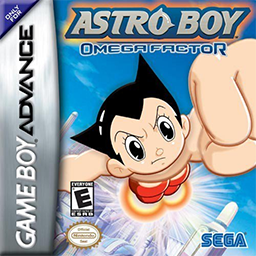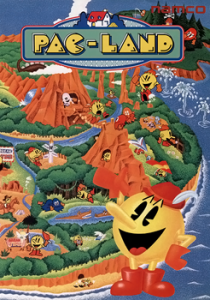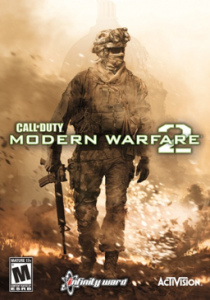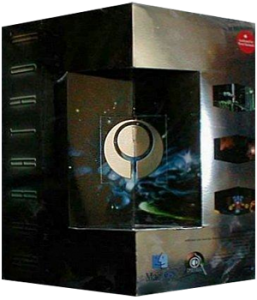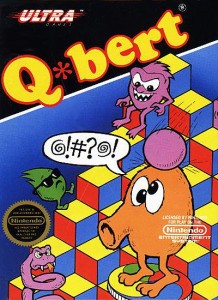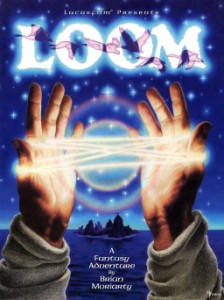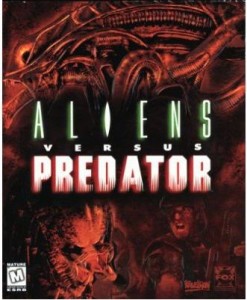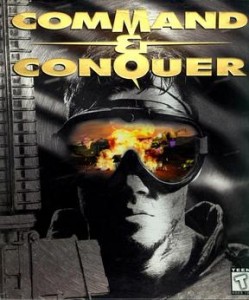398th played so far Genre: Racing
Genre: Racing
Platform: Playstation/PC
Year of Release: 1995
Developer: Psygnosis
Publisher: Psygnosis
Wipeout was one of the Playstation’s launch titles (the PC doesn’t ever matter in these discussions), a fast and slick racer that found its place through its association with the dance and house music culture that was big in the nineties. While a few of its sequels are on the list too, based on how the game was developed – using some interesting tricks and a lot of waiting as tracks were compiled, it seems interesting enough to look at now anyway.
Our Thoughts
If you want to understand the difference between Sony’s Playstation games line and that of Nintendo’s consoles, you need to look no further. Compare Wipeout to its Nintendo equivalent, the Mario Kart series (Mario Kart 64 was released around the same time). Both racers setting you in a limited field, racing around a track for three rounds while limited powerups are available. Others have done the same (in some ways Wipeout resembles the F-Zero series more closely in speed and aesthetics), but these are the two that have lasted.
Where Mario Kart uses mascot characters in open kart, focusing on their personality, Wipeout using at times abstract flying ‘racers’ that technically have racers, but without any real personality. Mario Kart has a friendly, manageable speed – you need your reflexes, but it’s not impossible to keep up. Wipeout feels fast and sleek, and while your round times may be similar, the curves and speed make it feel a lot faster, including making it easier to get stuck. Even the jumps feel bigger and scarier, even if I think I fell down holes in Mario Kart more often.
Even the powerups give this feeling. Mario Kart‘s are themed and often obvious if you know the franchise – banana peels, shells and stars are obvious. Even mushrooms become easy to work out.
(As a quick aside, the book claims there are no powerups in this game. We’re not sure where this claim comes from – Wipeout clearly has the weapons you gather as you drive over flashing panels)
What it comes down to, in feel and play, is that Wipeout feels more grown up. As tough as Mario Kart can get, it can feel quite frivolous and family friendly. Wipeout instead carries an edge, clearing aiming at the teenagers and twenty-something who were part of this culture, courting them in looks and music. It seems to permeate the game and it becoming a minor symbol of the culture at the time seems to make perfect sense.
As a game, it plays well. It took me some time to get to grips with the different speed of the controls – something you’d always have – but it mostly felt responsive and fast. I wasn’t going to finish first any time soon, but I did start overtaking quite early on.
The tracks, too, contribute to this feeling. Looping, with large drops and jumps, they take advantage of your gravity-suppressed flight. They lead through a variety of environments – cities and mountains, the Grand Canyon and Antarctic clearly featuring – that have been adjusted to feel like they take place a century in the future. The game is meant to resemble the world of tomorrow, and while it relies on cliches, it uses them well. With that, the work on the tracks paid off – while these days you might want an HD update, they still look nice and at times easily recognisable, getting the broad strokes right even if sometimes the details seem to be missing. Fact is that there is a great HD Wipeoutgame on the Playstation 3, one of the first games I ever got on that console… as well as one of the first I ever actually downloaded.
Mostly though, this game provides the thrill a racer with this concept promises.
Final Thoughts
It’s difficult to explain the impact Wipeout had when it first appeared on our consoles. There’s a thrill to the game, an edge that isn’t there in other franchises that played it safer at the time. There’s nothing necessarily bad in the game, it just seems more grown up and unforgiving.
Even so, it has its elements of looking gorgeous, and while the game doesn’t give you much time to stare at your surroundings, you get the idea from the different tracks and their wildly differing surroundings. It adds to the pumped up atmosphere, creating something unforgettable on its own.
